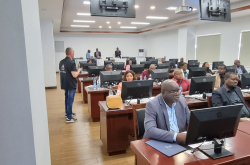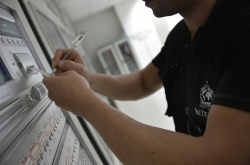This project will enable officials at borders and in the field to carry out biometric checks against INTERPOL notices and watchlists in order to detect and stop more criminals and terrorists.
The challenges
With the increased global movement of foreign terrorist fighters and criminals across borders, there is an ever-growing need for frontline law enforcement officers to accurately identify criminals in near real time.
In a constantly changing threat environment, biometrics provide a higher level of reliability than other forms of criminal identification.
Criminals and terrorists attempt to evade law enforcement agencies by changing identities, names and appearances. Law enforcement and border control authorities across the world are adopting biometric technologies to complement checks carried out on travel and identity documents.
How it will work
The Biometrics for Frontline Policing service will be built on INTERPOL’s existing secure global communications network (known as I-24/7) and will be extended to frontline law enforcement officials.
The solution could be integrated into the national infrastructure of respective member countries or be used through INTERPOL mobile devices.
Law enforcement and border authorities will capture biometric information of suspects and travellers, using their own equipment or mobile devices provided by INTERPOL.
Biometric information will then be sent to the INTERPOL secure cloud and checked against biometric watchlists. In the event of a match, the search requestor and INTERPOL National Central Bureau that owns the data will be informed and will take follow-up action.
The solution will be made available to all INTERPOL member countries. The main users will be:
- Frontline law enforcement officers
- Border control authorities
- INTERPOL National Central Bureaus
Operational benefits
- Reliably identify or locate criminals in near real time.
- Enable frontline law enforcement and border control authorities to use biometrics ad-hoc and where needed to match them against global biometric watch lists of criminals.
- Obtain relevant law enforcement information via a global biometric hub.
- Take pre-emptive police action against potential threats.
Related news

Breakthrough in longstanding Dutch missing person case
11 October 2024
INTERPOL welcomes new DNA legislation in Belgium
11 April 2024









